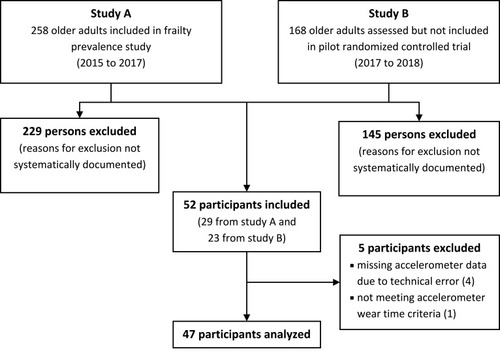Figures & data
Table 1 Detailed Description of the Models Used to Determine Low Physical Activity
Table 2 Characteristics for the Total Study Sample and for Subgroups of the Primary Phenotype
Table 3 Physical Activity Data for the Total Study Sample and for Subgroups of the Primary Phenotype
Table 4 Frailty Phenotype Prevalence According to the Assessment and Definition of Low Physical Activity
Figure 2 Frailty prevalence according to the assessment and definition of the low physical activity criterion.
Abbreviations: Accel, Accelerometer; CI, confidence interval; GPAQ 50+, German Physical Activity Questionnaire 50+; IPAQ, International Physical Activity Questionnaire; MLTPAQ, Minnesota Leisure Time Physical Activity Questionnaire; MVPA, moderate to vigorous physical activity; PASE, Physical Activity Scale for the Elderly; 7D-PAR, Seven Day Physical Activity Recall.

Table 5 Analysis of Positive Items of the Frailty Phenotype

